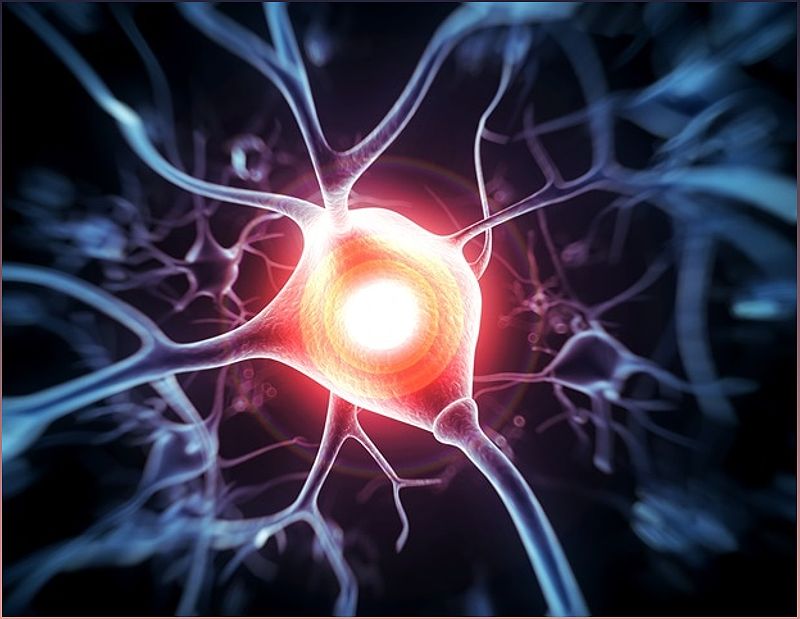Researchers have discovered a new drug class, TwinF interface inhibitors, that can inhibit a central cell death mechanism responsible for the progression of ALS. The neuroprotective molecule FP802 disrupts interactions between specific proteins, preventing cell death and preserving motor neuron function in ALS mouse models.
Breakthrough in ALS Treatment: New Drug Class Shows Promise
A new breakthrough in the treatment of amyotrophic lateral sclerosis (ALS), a devastating motor neuron disease, has been discovered by a team of researchers led by Prof. Dr Hilmar Bading from Heidelberg University.
Their study focused on a novel drug class and its ability to inhibit a central cell death mechanism responsible for the progression of ALS. The researchers found that a neuroprotective molecule called FP802, belonging to this new class of drugs known as "TwinF interface inhibitors," successfully disrupted the interactions between specific proteins.
The molecule was tested in a mouse model of ALS and in brain organoids derived from ALS patients, yielding promising results.
Understanding ALS: A Devastating Motor Neuron Disease
Amyotrophic lateral sclerosis (ALS) is a degenerative disease that primarily affects motor neurons, leading to the gradual loss of muscle control. As the disease progresses, the nerve cells responsible for voluntary muscle movement die, resulting in muscle wasting and impairments in speech, eating, and breathing.
Unfortunately, there are currently no effective drug treatments available for ALS patients, who typically face a life expectancy of two to five years following diagnosis.
The Novel Drug Class: TwinF Interface Inhibitors
The FP802 molecule used in this study represents a new class of pharmacological drugs called TwinF interface inhibitors. Discovered by Prof. Bading and his team at Heidelberg University's Interdisciplinary Center for Neurosciences (IZN), these inhibitors target the physical interactions between two ion channel proteins: NMDA receptor and TRPM4.
These proteins form a protein-protein complex known as the "death complex," which plays a role in ALS progression.
The Role of NMDA Receptors and TRPM4 in ALS Pathology
NMDA receptors are present on the surface of nerve cells, both within synapses (contact points between nerve cells) and outside of them. These receptors are activated by the neurotransmitter glutamate and contribute to learning, memory, and neuronal protection within synapses.
However, their activation outside of synapses leads to nerve cell damage and death. Previous research by Prof. Bading's team revealed that TRPM4 confers toxic properties to extrasynaptic NMDA receptors in the brain, contributing to ALS pathology.
Disrupting the Death Complex: The Neuroprotective Molecule FP802
The neuroprotective molecule FP802 targets the TwinF protein pocket of TRPM4, disrupting the interactions between the two proteins and preventing the formation of the NMDA receptor-TRPM4 death complex.
Through experiments using an ALS mouse model and brain organoids derived from ALS patients, the researchers observed that FP802 effectively prevented cell death and the loss of spinal motor neurons. This treatment improved motor abilities, slowed disease progression, and extended the lifespan of the mice.
Promising Prospects: Advancements in ALS Treatment
This discovery of a new class of pharmacological drugs offers promising prospects for ALS treatment. The next step involves optimizing the molecule FP802 for human use and conducting clinical trials.
To expedite this process, the researchers are collaborating with FundaMental Pharma, a startup company associated with Heidelberg University's IZN Department of Neurobiology. Dr. Jing Yan, a contributor to the study, recently joined FundaMental Pharma to accelerate the further development of FP802.
The research was funded by the German Research Foundation, the European Research Council, and the Alexander von Humboldt Foundation. The results of the study have been published in the journal "Cell Reports Medicine."
Conclusion: A Ray of Hope for ALS Patients
In conclusion, the discovery of the TwinF interface inhibitor FP802 represents a significant advancement in the quest for effective ALS treatments. By disrupting the interactions between specific proteins involved in ALS pathology, this neuroprotective molecule shows promise in preventing cell death and preserving motor neuron function.
With further development and clinical trials, FP802 may offer hope for ALS patients in the future.

